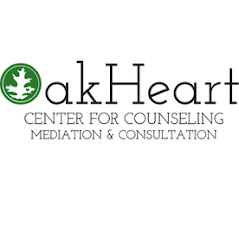Maintaining Factors in Social Anxiety DisorderWritten by Dr. Kat Harris, PhD, LCPSocial Anxiety Disorders is defined as persistent, intense fear or anxiety about specific social situations for fear of being judged negatively, embarrassed or humiliated. Individuals with Social Anxiety Disorder will either avoid anxiety-producing social situations completely or endure them with intense fear or anxiety, often using safety behaviors as a way to cope with their distress.
Individuals with Social Anxiety Disorder are thought to experience anxiety in response to social situations because they assume that they will be evaluated negatively and catastrophize about the implications of negative evaluation. More specifically, individuals with Social Anxiety Disorder assume that they will be evaluated negatively because they think that their abilities will fall short of others’ expectations, that there are high expectations for social performance, have unconditional negative beliefs about the self, and assume that acting in certain ways will result in negative consequences (Clark & Wells, 1995). There are a number of maintaining factors in Social Anxiety Disorder that are targeted in treatment as a way to stop the cycle of anxiety and to help ensure individuals with social anxiety are able to overcome their fears. Negative Thoughts/Beliefs Individuals with social anxiety engage in thinking patterns that tend to reflect “cognitive distortions” or thinking errors that put them at risk for anxiety. For example, an individual with social anxiety may predict that others will think that they are incompetent or stupid, or that others will be able to tell that they are very anxious, and that these negative evaluations from other’s will result in disasterour consequences (e.g., “everyone will laugh at me and I will be shamed and have to leave”). These are typically referred to as catastrophic likelihood and cost estimates, and treatment specifically works to target these thoughts/beliefs and alter them to reflect healthy predictions. This can be done either directly via cognitive restructuring, or indirectly via the use of exposures or behavioral experiments. Avoidance/Safety Behaviors Passive Avoidance (complete avoidance of a situation, people, or places) and safety behaviors (behaviors done to help the person feel more safe) can actually create and perpetuate thinking errors because they can: exaggerate physical symptoms of anxiety (e.gripping a podium tightly will increase shaking), prevent an individual from learning that they overestimate the likelihood and severity of their feared social consequences, maintain self-focus of attention and self-monitoring (see below) and potentially increase the likelihood that others will notice symptoms of anxiety. Therefore, treatment aims at helping individuals with Social Anxiety Disorder approach their fears without the use of safety behaviors. Common safety behaviors in social anxiety are always needing to bring a “safe” person to social events, avoiding eye contact, not asserting oneself, prefacing interactions with excuses such as “I’m not really myself today so excuse me if I seem off,” being a “wallflower,” exiting conversations as quickly as possible, only engaging in social situations with the use of benzodiazepine medications such as Xanax, perfectionistic preparations (e.g., practicing what one will say over and over again), etc. Internal Self-Focused Attention and Observable Self Individuals with social anxiety engage in detailed monitoring of themselves which then enhances the individual’s awareness of anxiety symptoms and hinders their ability to gather disconfirming information from their environment (Clark & Wells, 1995). In addition, the individual is then thought to use this internal information to construct an impression of the self (perceived observable self) which they assume is also the impression that observers will construct (when in fact, a socially anxious individual's perceived observed self often significantly differs from what others perceive). For example, a socially anxious individual may assume that others can tell they are terrified and shaking and sweating when others may not notice, or not notice to the same degree. Anticipatory and Post-Event Processing Anticipatory Anxiety refers to the tendency for a socially anxious individual to hyperfocus on an upcoming feared social event and worry intensely about it. For many individuals with social anxiety, their anticipatory anxiety is described as being either equally as anxiety provoking or even more anxiety provoking as the event itself. Some individuals describe this experience as a sense of dread or doom. Post-Event Processing is a kind of repetitive thinking pattern that is negative following a social event. For example, an individual that just finished a social interaction may focus on one or two specific incidents that occurred during the social interaction where they felt they failed or embarrassed themselves or didn’t live up to their expectations or the perceived expectations of the other individual(s). They may think to themselves “why did I say that, I’m so stupid, now they think I’m selfish.” The individual will then ruminate about this perceived failure/embarrassment/confirmation of their fears over and over again. In fact, I work with many socially anxious individuals that can recall in great detail a long list of past social events/interactions that they still feel ashamed of and ruminate and think about many years and decades after it took place. For many socially anxious individuals, thinking about these past events can feel very shameful and painful. In treatment, individuals with social anxiety are taught several tools to inhibit the use of Anticipatory Anxiety and Post-Event Processing. Some examples include using present-focused attention, de-catastrophizing, self-compassion exercises, worry/possibility exposures, and fact-based evidence processing. References Clark, D. M., & Wells, A. (1995). A cognitive model of SP. In R. G. Heimberg, M. R. Liebowitz, D. A. Hope, & F. R. Schneier (Eds.), SP: Diagnosis, assessment, and treatment (pp. 69-93). New York, NY: Guilford Press. Comments are closed.
|
OakHeart
|
- Home
- Counseling
-
Specialties
- Depression
- Bipolar Disorder
- Anxiety Disorders >
- Obsessive-Compulsive Disorder (OCD)
- Eating Disorders
- Grief and Bereavement
- ADHD
- Maternal Mental Health
- Infertility, Miscarriage, and Neonatal Loss
- Domestic Violence and Sexual Assault
- Posttraumatic Stress Disorder (PTSD) >
- Trauma
- Non-Suicidal Self-Injury (NSSI)
- Substance Use Disorders (SUD)
- Anger Management
- Insomnia
- Divorce Recovery
- Relationship Concerns and Couples Counseling
- Self-Esteem
- Therapy for Therapists
- LGBTQA+ Support
- Faith-Based Counseling
-
Providers
- Erin Mitchell
- Pamela Heilman
- Katie Sheehan
- Hillary Gorin
- Lee Ann Heathcoat
- Adam Ginsburg
- Megan Noren
- Sarah Williams
- Christina Bieche
- Bridgette Koukos
- Laura Lahay
- Kate Nash
- Anna Perkowski
- Alma Lazaro
- Leah Arthur
- Marissa Vogrin
- Erin Blair
- Amy Jakobsen
- Lizzy Lowe
- Tony Fasano
- Gerry Lawm
- Vanessa Osmer
- Kat Harris
- Locations
- Contact
- Treatments
- Employment
- FAQ and Notices
- OakHeart Blog
- Administrative and Leadership Team
- Mental Health Resources
- Divorce Mediation
- Professional Consultation
|
|




